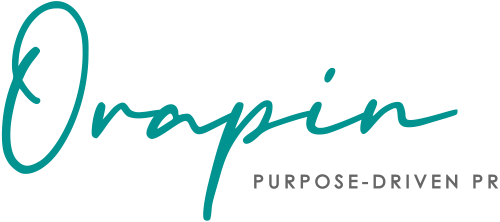
Understanding the PREP phase – The 2nd P of the “7P’s of PR”
If you are reading this blog post, you likely already understand the value of PR as a way to amplify the voice of a company, cause, or individual. As you also likely know, a solid PR strategy can build clout, awareness, and impact and ultimately drive business growth. All good things, right? Right.
Great! Ready to start pitching? Hold up, not so fast! Check our post on the 7 P’s of PR first. Hopefully you’ve already come up with a PLAN, now you are ready to PREP!
Why do I need to prep? Why can’t we just get started?!
Imagine these scenarios:
- You’re ready to go, you start pitching your amazing news and all of a sudden your phone is ringing off the hook with reporters requesting interviews, a project timeline, bios for everyone involved, and they need it all today – prior to the 5 p.m. news. Unfortunately, it is 2 p.m. and you don’t have a bio drafted, nor a timeline put together for the project, and you didn’t do any media training or practice interviews and the whole effort becomes a flop.
- You thumb through the latest copy of the local business journal and you see several flashy photos showing your competitors accepting plaques and recognition at a recent awards banquet. After doing a bit of research, you realize that your company should have been up on that stage (either with or instead of your competitors), but alas the opportunity to showcase your hard work has passed. Fingers crossed you don’t forget to submit your application for that award next year!
- You’ve worked hard to come up with some fantastic byline article ideas and you pitch them to some top-tier outlets. The editor of the Forbes loves your idea and goes to your LinkedIn page to learn more about your background and expertise on the topic. Unfortunately, you haven’t updated LinkedIn since 2012 and your current position is listed as Assistant Account Executive, making it appear that you are a junior staffer with no credible credentials. The editor passes on your article topic not knowing that you now hold a Ph.D. and are the CEO of the company that you founded in 2013.
As these examples demonstrate, preparation is key to a successful PR strategy. Get your ducks in a row first, then begin the outreach. Preparation ensures the most results for your effort, and frankly, it makes life easier!
What should I do to prep for a PR campaign?
Ok, so now that you agree it’s best to take time to prep and not put the cart before the horse (even if you’re doing so begrudgingly) it is time to get to work!
Here’s our prep list. Depending on the strategy, some items may not apply. But it is a good idea to think through each item in this list and consider how it might come in handy down the road.
- Create media contact lists. Consider outlets where you might submit contributed articles, your top tier press targets, your tier 2 and 3 press targets, relevant podcasts, influencers, freelance writers, and bloggers should all be considered as potential partners to help share your stories.
- Create bios for anyone and everyone who might be profiled or pitched. Create long-form and short-form versions of the bios for media and consider creating separate speaker bios/resumes which include relevant speaking experience, if needed.
- Create a list of speaking opportunities. Speakers are often selected 6-18 months in advance of the event, so map out dates and make sure you pitch early.
- Create a list of awards opportunities for the coming year. Deadlines for awards submissions are often 3-6 months in advance of the award announcement, so again, planning is key.
- Create a blog or thought leadership editorial calendar for the year. Preparing topics in advance will help you to avoid the monthly predicament of staring at a blank screen and wondering what the heck to write about (is anyone else else tormented by the blinking cursor?). Note observances, e.g. Mental Health Awareness Month or Women’s History Month or whatever might be relevant to your particular business, as well as holidays and themes throughout the year.
- Create 3-5 contributed article overviews. If you are pitching contributed articles, you will want to have synopses prepared for several different areas of your expertise. Frequently editors will respond to article pitches with requests for different material or requests for several ideas and they’ll pick and choose their favorite depending on the focus of their publication. It’s a good idea to have several ideas flushed out in advance.
- Update your social media profiles, particularly LinkedIn. The first thing a reporter will do if they aren’t familiar with you/your organization is look you up on social media. Don’t forget to post all your thought leadership articles on social as well. It is a great place to share your thoughts and help reporters find examples of your voice.
- If your PR strategy focuses heavily on thought leadership, create a speaker page/website or personal brand website. These sites are great places to store links to past speaking gigs, podcast interviews, and published work. They function as a searchable resume for someone interested in booking you for their upcoming conference, podcast, or even an editor looking at your past contributed work.
Whew, sounds like a lot…
The prep phase of PR planning can be very labor-intensive. But trust us, the effort upfront is worth the headaches and possible missed opportunities it will save you down the road. Plus it gets you set up for the fun part of actually getting your company, your ideas, and/or your news out into the world.
We’ll leave you with a few words of inspo from one of our favorite authors…”You’re off to great places, today is your day. Your mountain is waiting, so get on your way.”
Just remember the Scouts motto: Be prepared!
Photo by Javon Swaby from Pexels

Diana Crawford is a seasoned public relations consultant with more than 15 years of agency, consulting, and in-house experience. She joined Orapin in 2013 and manages account services and client communications strategy development. She has worked across a variety of industries and has expertise with professional services, food/alcohol, health and wellness, lifestyle, sports, education, tech, and non-profit organizations.
